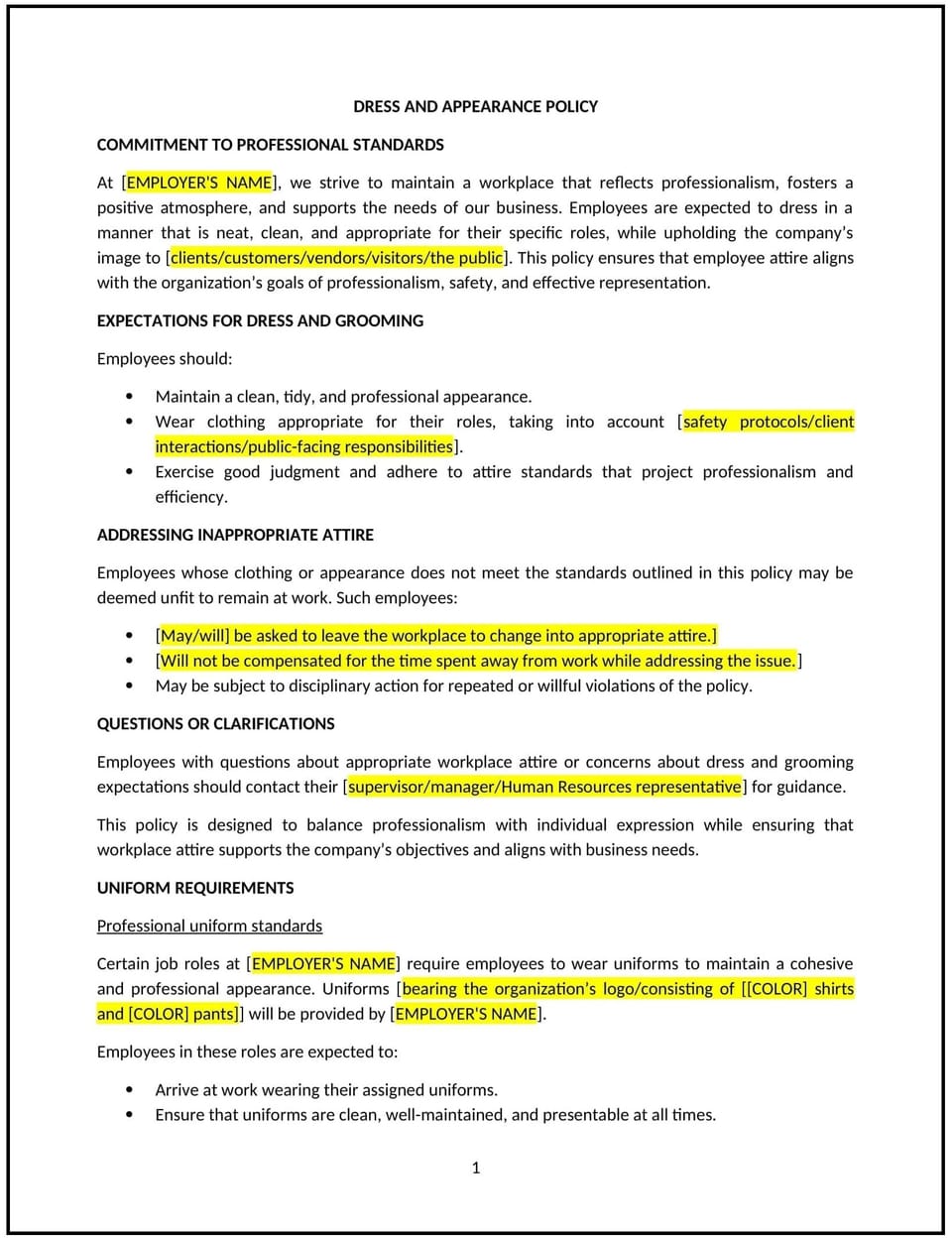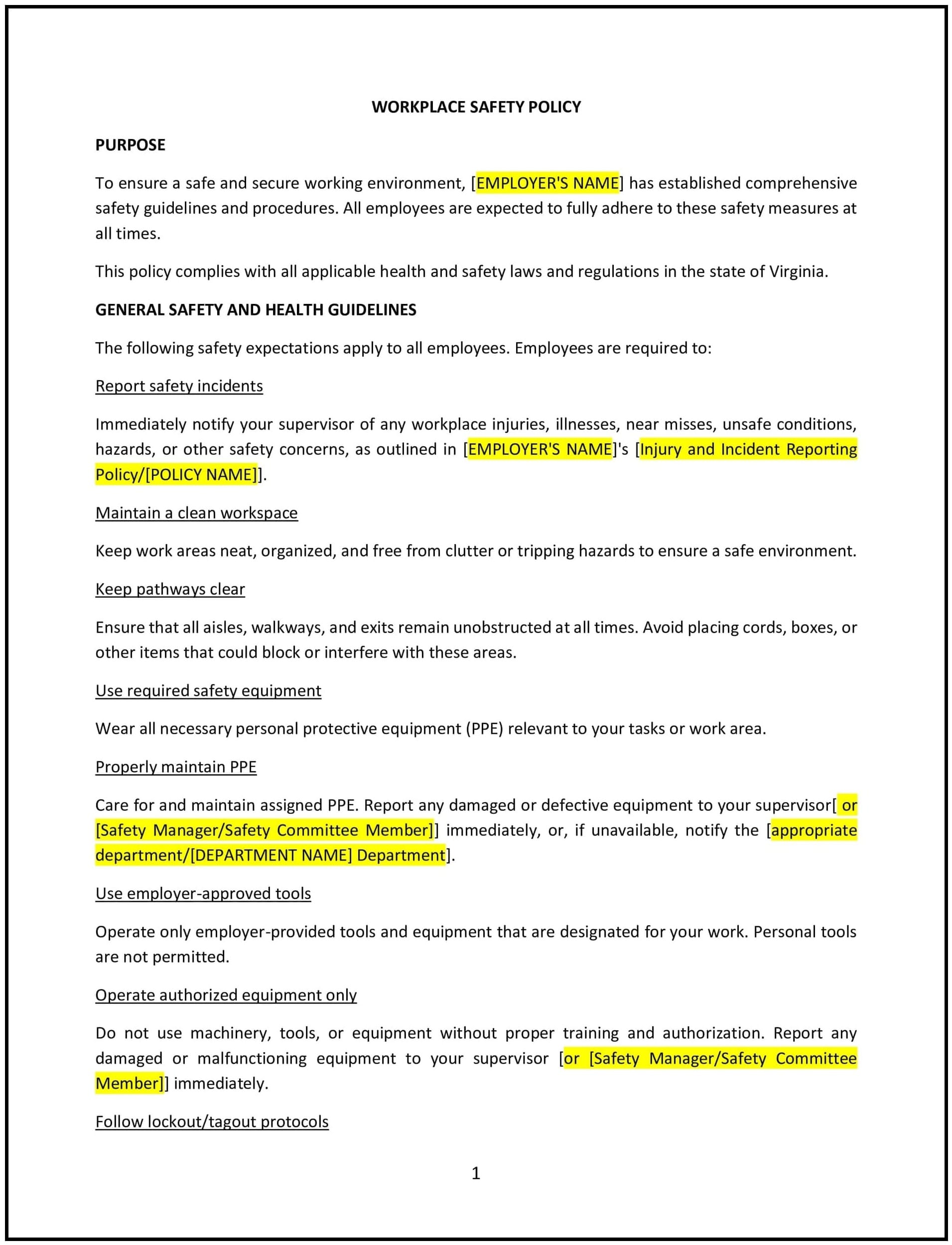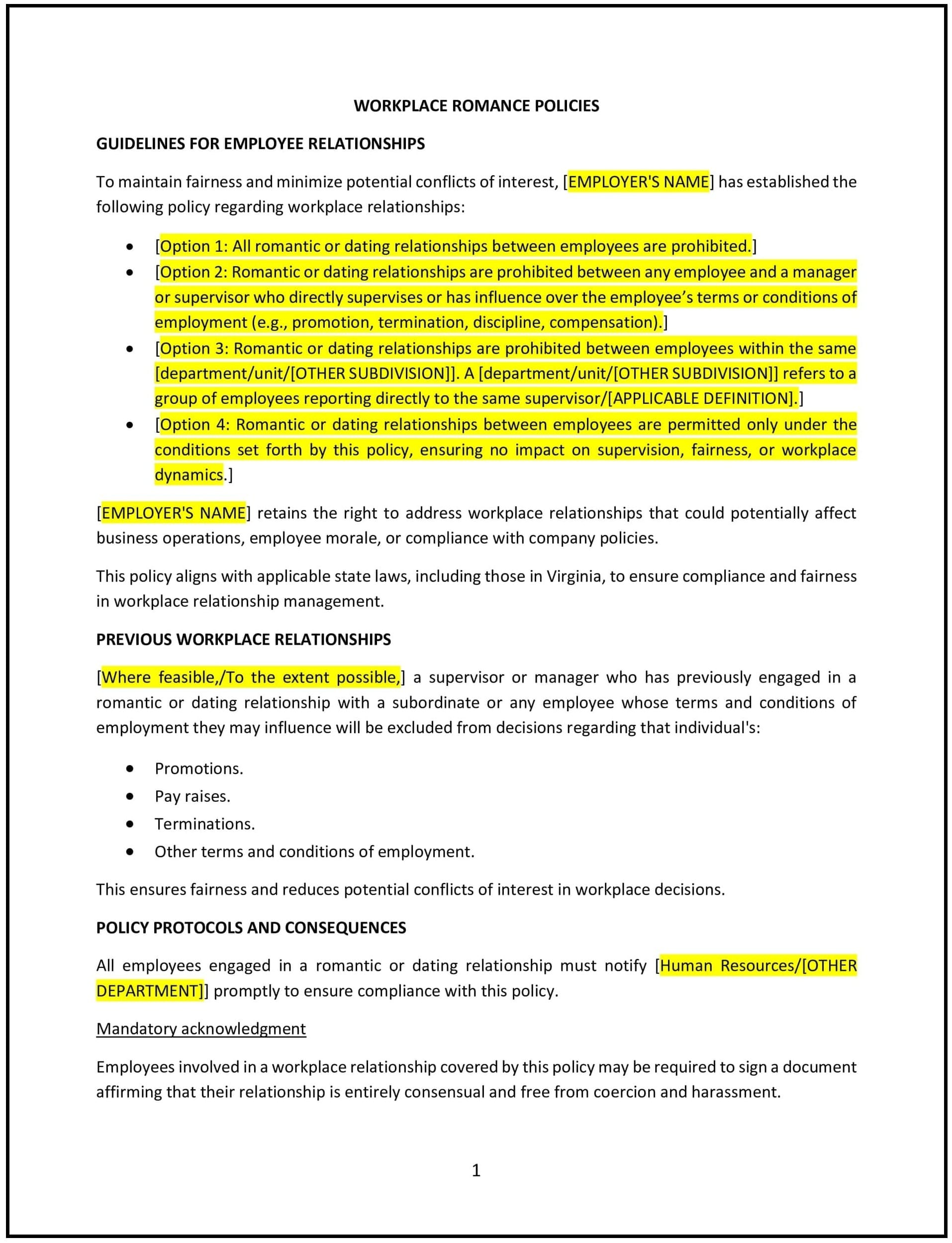Dress and appearance policy (South Dakota): Free template

Dress and appearance policy (South Dakota)
This dress and appearance policy is designed to help South Dakota businesses establish guidelines for professional and appropriate attire in the workplace. It provides clear expectations for employee appearance, balancing professionalism with employee comfort and individuality.
By adopting this policy, businesses can maintain a cohesive image, promote safety, and align with industry standards.
How to use this dress and appearance policy (South Dakota)
- Define acceptable attire: Specify appropriate clothing for different roles, settings, or events, such as business casual, formal wear, or uniforms.
- Address safety requirements: Include guidelines for protective clothing or equipment for specific roles, ensuring compliance with South Dakota safety regulations.
- Provide examples of prohibited attire: Clarify unacceptable clothing items or styles, such as clothing with offensive messages or inappropriate footwear.
- Include grooming standards: Outline expectations for personal grooming, hygiene, and overall appearance, while respecting diversity and individual expression.
- Consider accommodations: Acknowledge and accommodate cultural, religious, or medical attire as required by South Dakota and federal laws.
- Establish enforcement procedures: Provide steps for addressing violations, including verbal warnings, written notices, or other corrective actions.
- Monitor compliance: Regularly review the policy to ensure alignment with workplace needs and South Dakota employment regulations.
Benefits of using this dress and appearance policy (South Dakota)
This policy provides several benefits for South Dakota businesses:
- Promotes professionalism: Establishes clear standards for workplace attire and appearance.
- Enhances safety: Supports compliance with safety requirements for specific roles or environments.
- Encourages inclusivity: Respects cultural, religious, and individual expressions of identity.
- Reduces disputes: Minimizes confusion or disagreements about acceptable workplace attire.
- Supports branding: Helps maintain a cohesive and professional image aligned with company values.
Tips for using this dress and appearance policy (South Dakota)
- Communicate the policy: Share the policy with employees during onboarding and include it in the employee handbook or internal resources.
- Provide examples: Use visual aids or detailed examples to clarify acceptable and prohibited attire.
- Be flexible: Adapt dress codes for specific occasions or roles, such as client meetings or fieldwork.
- Address concerns promptly: Handle any employee concerns or disputes about the policy with fairness and sensitivity.
- Update regularly: Revise the policy to reflect changes in workplace practices, industry standards, or South Dakota employment laws.
Q: What attire is considered appropriate under this policy?
A: Appropriate attire may vary based on the role and setting, but typically includes business casual, formal wear, or uniforms as specified by the policy.
Q: How does the policy address cultural or religious attire?
A: The policy allows for accommodations to respect cultural or religious attire, in compliance with South Dakota and federal laws.
Q: Are there specific safety requirements for certain roles?
A: Yes, roles requiring protective clothing or equipment must adhere to safety standards outlined in the policy and South Dakota regulations.
Q: How should businesses handle dress code violations?
A: Businesses should address violations through verbal warnings, written notices, or other corrective actions as specified in the policy.
Q: Can businesses modify the dress code for special events?
A: Yes, businesses may adapt dress codes for specific occasions, such as client meetings, casual Fridays, or industry events.
Q: How often should this policy be reviewed?
A: This policy should be reviewed annually or whenever significant changes occur in South Dakota laws or workplace practices.
Q: Does the policy apply to remote employees?
A: Businesses may specify attire guidelines for virtual meetings or client interactions involving remote employees.
Q: How can businesses ensure inclusivity in the dress code?
A: Businesses can include accommodations for cultural, religious, or medical needs and avoid overly restrictive or discriminatory guidelines.
This article contains general legal information and does not contain legal advice. Cobrief is not a law firm or a substitute for an attorney or law firm. The law is complex and changes often. For legal advice, please ask a lawyer.


